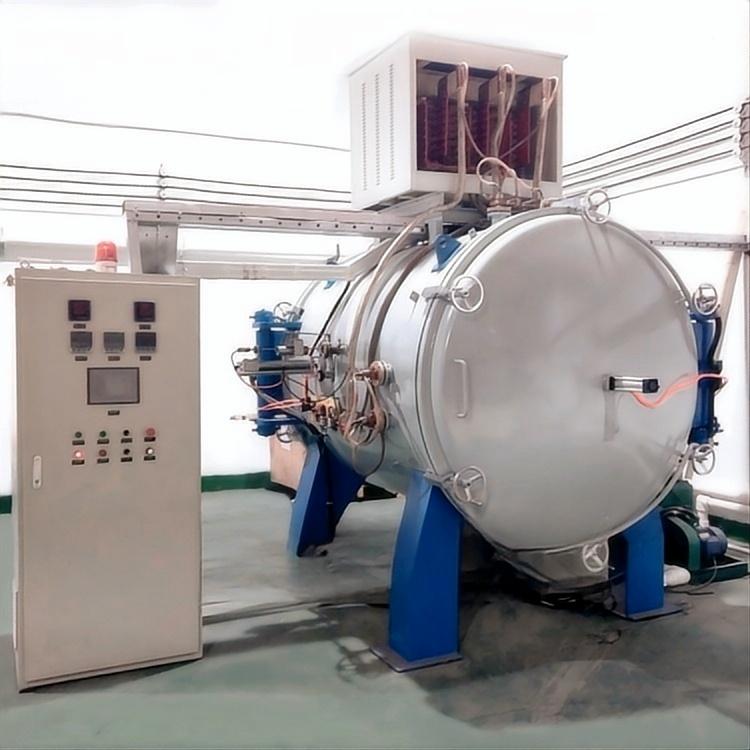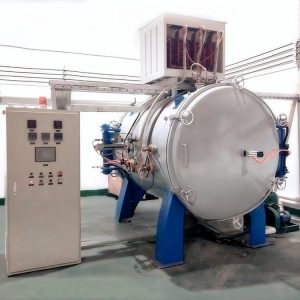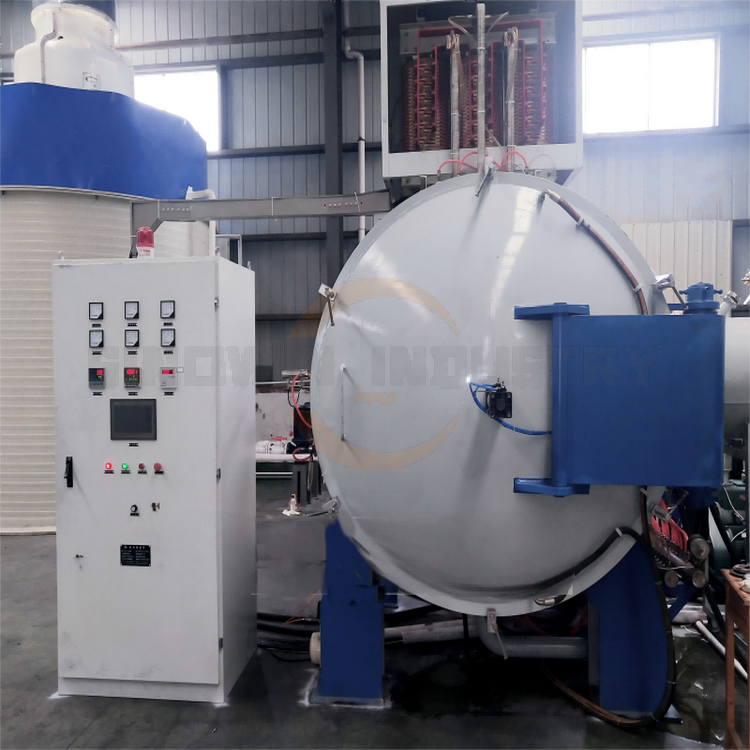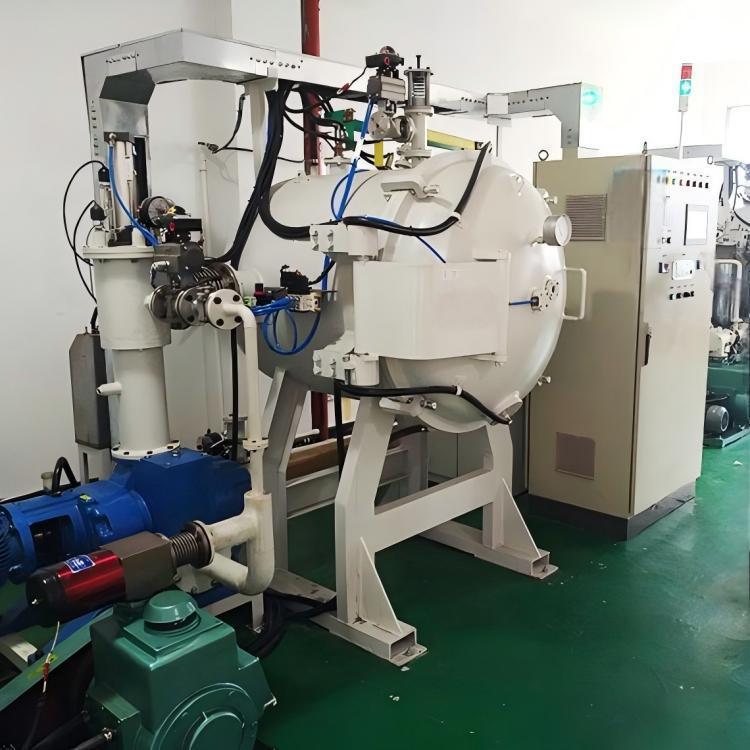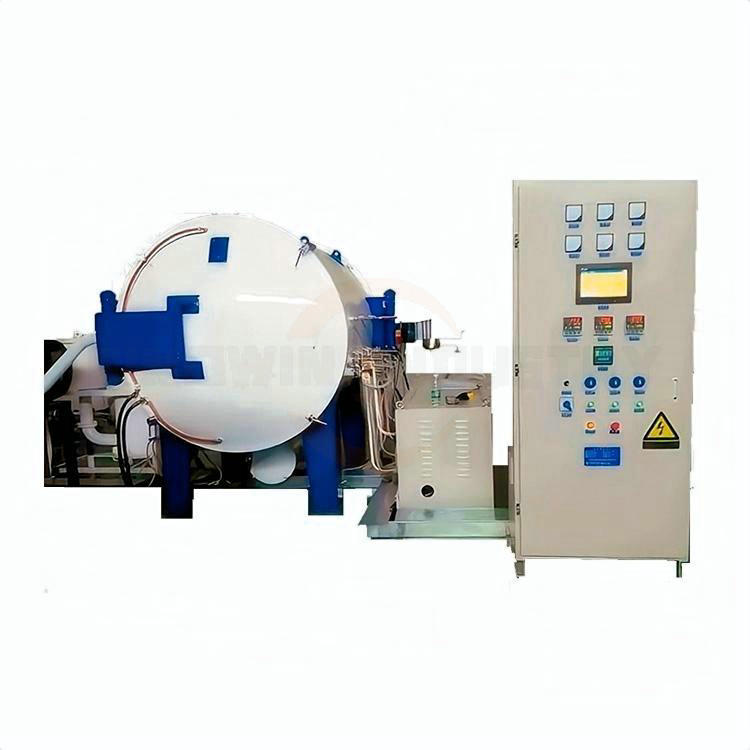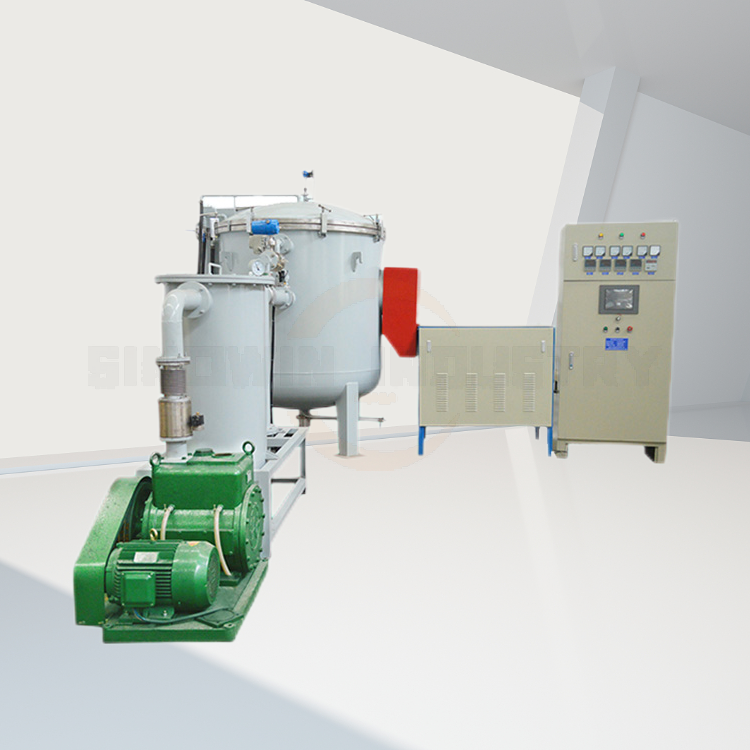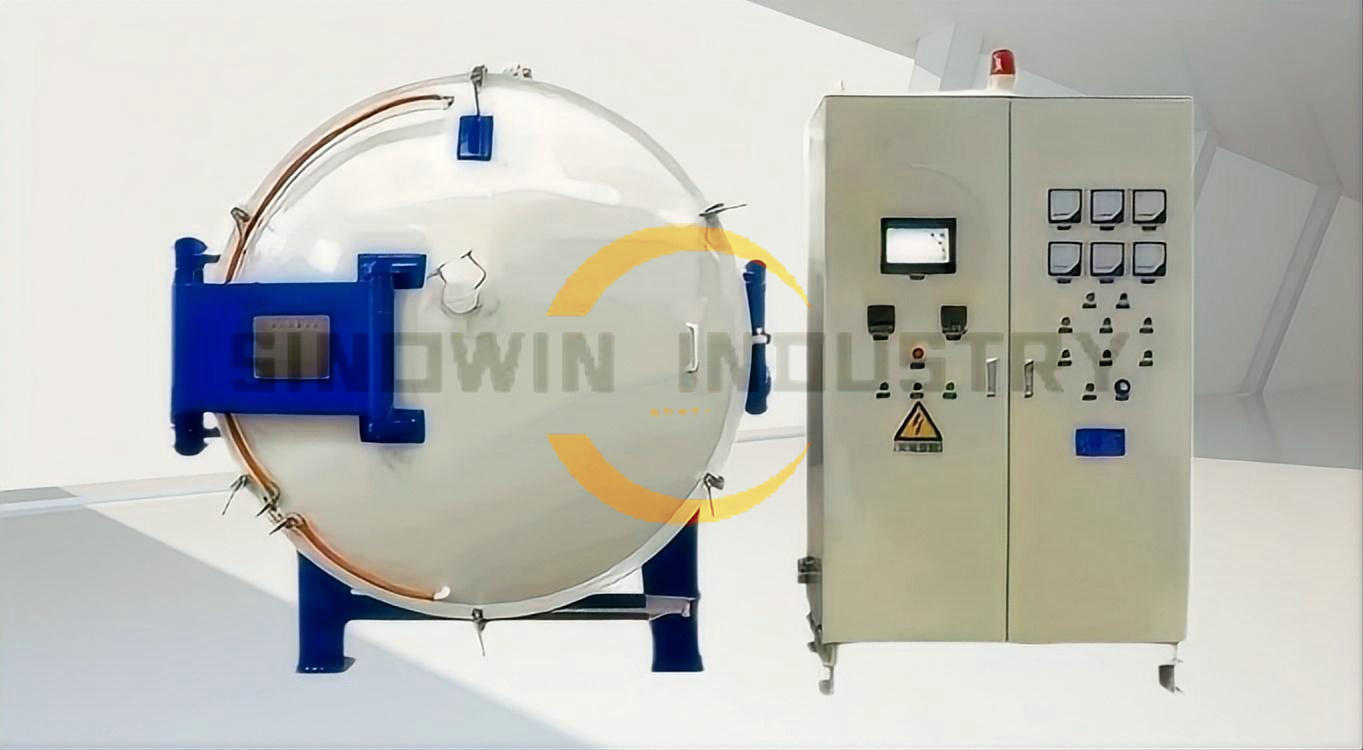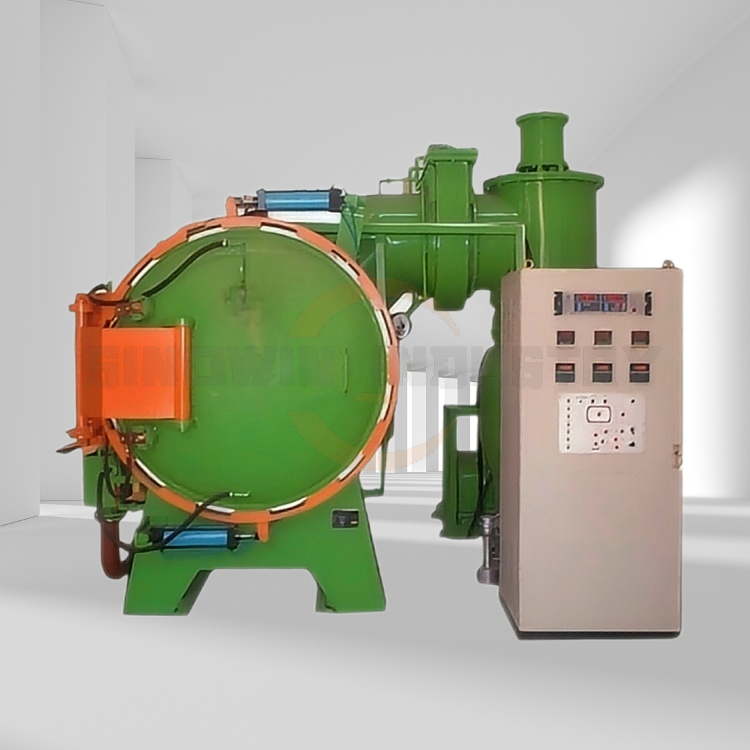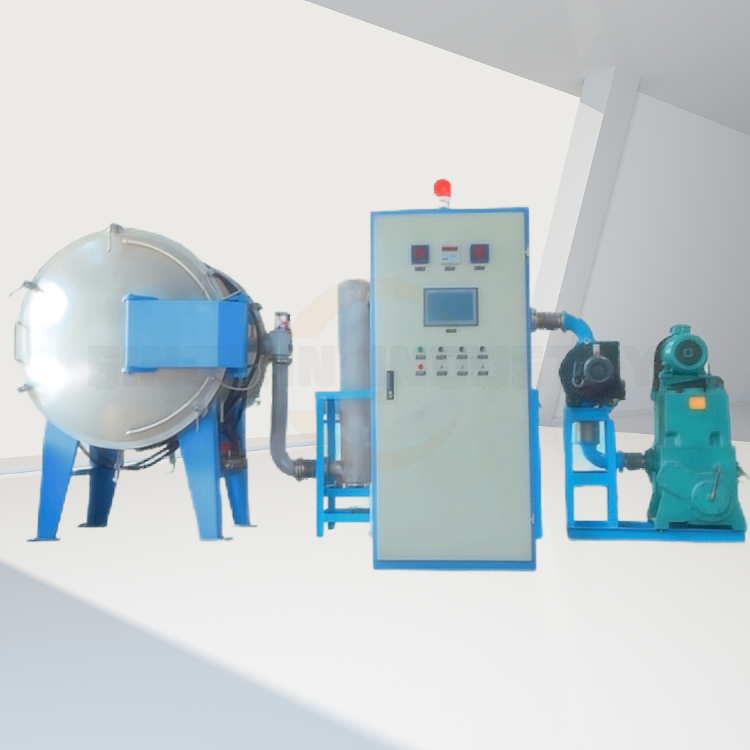Product Description:
VC (Vapor Chamber) radiator sintering furnace
The VC (Vapor Chamber) radiator sintering furnace is used for the efficient sintering and brazing of copper-based and copper powder liquid cooling heat sinks (VC). This advanced furnace exemplifies high production capacity and exceptional operational efficiency, making it an indispensable tool for modern manufacturing.
Key Features:
- High-Precision Temperature Control: Equipped with high-precision thermocouples for zoned temperature measurement and control, this furnace guarantees measurement accuracy and uniform temperature distribution throughout the sintering process.
- Intelligent Digital Temperature Control System: The VC (Vapor Chamber) radiator sintering furnace utilizes a state-of-the-art digital display intelligent temperature control system. It fully automates the temperature measurement and control processes, allowing users to customize and store up to four distinct heating curves, each consisting of 64 segments, for optimal sintering performance.
- Data Recording Capability: This furnace includes a robust temperature parameter measurement and recording function. Users can easily access and transfer recorded data to a USB drive for further analysis and record-keeping.
- Advanced Power Regulation: Featuring a power regulator from Taiwan, this furnace is equipped with comprehensive overload, short circuit, mis-trigger, and overvoltage protection mechanisms, ensuring safe and reliable operation.
- Multi-Channel Data Acquisition: The VC (Vapor Chamber) radiator sintering furnace incorporates a multi-channel data acquisition system with an intuitive human-machine interface. All operating parameters are clearly displayed, making it easy for users to operate and monitor.
- Versatile Sintering Conditions: The furnace supports low-pressure sintering under nitrogen, as well as nitrogen-hydrogen mixed gas environments, effectively minimizing elemental volatility and loss during the sintering process.
- Directed Differential Airflow: Designed with a directed differential airflow system, the furnace ensures that there are no dead zones within the chamber, resulting in brighter products with reduced oxidation.
- Controlled Atmosphere Management: The flux control mechanism allows for precise regulation of gas flow and chamber pressure, achieving micro-negative constant pressure sintering. This feature significantly suppresses metal volatility loss and enhances product density and quality.
- User-Friendly Operation Interface: The VC (Vapor Chamber) radiator sintering furnace is equipped with a precise and user-friendly graphical operation interface integrated with a touchscreen for intuitive control and monitoring.
Technical Parameter of 1000 degree (Vapor Chamber) VC Radiator Sintering Furnace:
| Volumme(L) | 54 | 160 | 300 | 484 |
| Working Temperature(℃) | 950 | 950 | 950 | 950 |
| Max.Temperature(℃) | 1000 | 1000 | 1000 | 1000 |
| Power(KW) | 40 | 80 | 90 | 120 |
| Work Size(mm) | 300x300x600 | 400x400X1000 | 500x500X1200 | 550x550x1600 |
| Heating Method | Resistance Heating | |||
| Atmosphere | Vacuum /N2/ mixture of H2 and N2 | |||
Whether you’re enhancing the properties of your heat sink materials or seeking a reliable solution for advanced manufacturing processes, the VC (Vapor Chamber) radiator sintering furnace sets the standard for quality, performance, and innovation in the themal industry.SINOWIN INDUSTRY’ VC (Vapor Chamber) radiator sintering furnace is one guaranteed option for your heating treatment industry.
Q&A for VC (Vapor Chamber) radiator sintering furnace
Q1: What is a VC (Vapor Chamber) radiator sintering furnace and how does it work?
A1: The VC (Vapor Chamber) radiator sintering furnace is a specialized piece of equipment designed to perform the sintering process on heat sinks made from various materials, typically metal powders. The furnace operates by heating the materials to a temperature that allows particles to bond together without melting. It achieves this through carefully controlled temperature and atmospheric conditions, resulting in a solid, resilient heat sink that provides efficient thermal management for electronic components.
Q2: What are the advantages of using VC sintering technology for heat sinks?
A2: VC sintering technology offers numerous advantages for heat sink production. Firstly, it ensures exceptional thermal conductivity, promoting efficient heat dissipation, which is critical for optimal device performance. Secondly, the sintering process allows for precise control of material properties, resulting in customized heat sinks that can meet specific application requirements. Additionally, sintering minimizes material waste and allows for complex geometries that traditional manufacturing methods may not achieve, ultimately enhancing the overall efficiency and effectiveness of thermal management solutions.
Q3: How do I maintain my VC (Vapor Chamber) radiator sintering furnace?
A3: Maintaining your VC (Vapor Chamber) radiator sintering furnace is crucial for ensuring optimal performance and longevity. Regularly check and clean the furnace chamber to prevent any buildup of debris or material residue that can affect sintering quality. It is important to monitor and calibrate temperature control systems routinely. Always follow the manufacturer’s guidelines for maintenance schedules and replace any worn or damaged parts promptly. Scheduling professional inspections periodically can also help in identifying potential issues before they escalate, ensuring that your furnace operates efficiently at all times.
Q4: What materials are suitable for VC heat sink sintering?
A4: A variety of materials can be used in VC heat sink sintering, most notably metal powders such as aluminum, copper, and various alloys. These materials are chosen for their superior thermal conductivity and mechanical properties. Additionally, composite materials can also be considered, which may enhance thermal management characteristics. However, it’s essential to ensure compatibility with the sintering process to achieve optimal bonding and performance. For best results, follow the specific material guidelines provided by the peak sintering furnace manufacturer.
Donot hesitate to Contact us at once for quotation of Sinowin Industry’s industrial&lab furnaces , and we are not only a supplier but a reliable partner to assist you the safe solutions of the heat treatment .
Technical Parameter of 1000 degree (Vapor Chamber) VC Radiator Sintering Furnace:
| Volumme(L) | 54 | 160 | 300 | 484 |
| Working Temperature(℃) | 950 | 950 | 950 | 950 |
| Max.Temperature(℃) | 1000 | 1000 | 1000 | 1000 |
| Power(KW) | 40 | 80 | 90 | 120 |
| Work Size(mm) | 300x300x600 | 400x400X1000 | 500x500X1200 | 550x550x1600 |
| Heating Method | Resistance Heating | |||
| Atmosphere | Vacuum /N2/ mixture of H2 and N2 | |||
